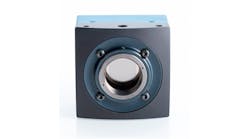Currently, several OEM image-processing-product sectors are in fierce competition. Vendors of lighting equipment, cameras, frame grabbers, software, monitors, and operating systems are diligently searching for ways to increase their product sales and market share. For example, Japan-based CCS America Inc. has recently opened its US headquarters in Waltham, MA, to distribute its line of LED lighting equipment (see Vision Systems Design, May 2000, p. 55). Similarly, the Denmark-based camera maker JAI has opened a North American office in Laguna Hills, CA.
But as the OEM image-processing field becomes crowded, larger companies are expected to buy out smaller industry-related companies to boost their market share. For example, Key Technology (Walla Walla, WA), a supplier of process-automation systems, has acquired Advanced Machine Vision Corp. (Medford, OR), a leader in standard and CE-compliant product-inspection vision systems. Likewise, Cognex Corp. (Natick, MA), a leading supplier of machine-vision systems, has recently acquired Image Industries (Surrey, England), the maker of Checker, an integrated vision sensor used in product-inspection applications for the electronics, automotive, and consumer-goods industries.
More than in any other imaging industry segment, a technology turmoil seems to be broiling in the frame-grabber market. Industry analysts are projecting that several frame-grabber companies will be purchased by large system vendors eager to obtain image-processing expertise at reasonable cost. Smaller frame-grabber companies are struggling to differentiate and innovate their product line at a profitable price. Too many frame-grabber boards are remarkably similar with only a slight proprietary difference.
At the same time, various other board vendors are expected to produce high-speed digital-camera-interface cards based around the extended PCI standard-PCI-X-in the next few months. They will be competing head-on with camera and frame-grabber vendors. For example, consider the frame-grabber vendors who are adding on-board FPGA-based hardware to compensate for fixed pattern noise and pixel-response nonuniformity correction in CCD cameras. They are finding out that camera vendors are incorporating those same features into their cameras.
Systems vendors and OEMs both realize that added functionality increases the value of their products. But this year system integrators and end users are demanding higher value at less cost. As a result, frame-grabber vendors are competing less on technical excellence and more on high volume and low price. A tight jitter specification means less to system buyers than cost-efficiency.
Even though systems vendors may regard board-level suppliers as easy prey for grabbing increased expertise and market share, they must also realize that the product diversity of the image-processing market may bring them integration complications as well as profits. Frame grabbers built for security applications, for example, do not need the same features as those built for machine-vision applications. What's more, after cameras and frame grabbers are selected for vision/imaging systems development, the integration of digital-signal processing, image analyzing, computer processing and data storage, and operational and application software demands careful attention.
As the number of vision/imaging companies diminishes via acquisitions, the remaining systems suppliers must be careful to provide more than acceptable product integrity, performance, and cost. They must continue to monitor user needs and improve user services.
Andy WilsonEditor [email protected]





